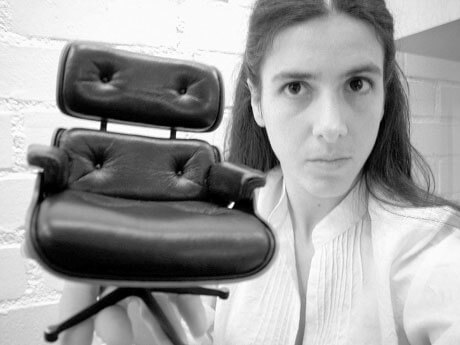A tromp d’oleil of sorts for the aching id
Have you ever wondered what your therapist is thinking? Amie Siegel has, and the result is the uneven mixing of styles in her new movie “Empathy.” Siegel interweaves real interviews featuring a trio of graying male therapists with a fictional patient, and adds into the mix a faux documentary and screen tests.
The film is most effective when it is in documentary mode, with Siegel asking psychiatrists questions like “Have patients ever lied to you?” “Do you enjoy the voyeuristic aspects of your job?” and “Why is prostitution different from seeing a shrink?”
In a choice that Freud might have found fraught with subconscious meaning, Siegel only speaks to male therapists. There is a lot of illuminating discussion here in the vein of “I would never sleep with a patient but I have wondered what she looks like naked.” The therapists treat the act of a female patient coming in and lying down on the couch and telling intimate stories and secrets to a stranger with a surprising amount of prurience that hopefully is not indicative of most therapy sessions. But a male therapist who has had scores or more of female patients has probably undressed one or two of them in his mind.
The choice of only talking to older white male therapists makes this movie highly selective storytelling. The intermingling of a fictional character, Lia (Gigi Buffington), in her therapy sessions with the three real therapists at first bogs down the narrative. Is Lia an illustration of a real patient or a personification of the director’s agenda? It usually feels like the latter.
Lia is shown screen testing for her role. She finds herself thinking that anything she does in bed with her boyfriend is fodder for analysis and that, therefore, the shrink is in bed with them. Of course she brings this up just as her 50-minute session is winding down.
The film also treats us to a PBS-style look at therapy and how a session’s trappings intersect with the rise of modern architecture and design. A look at a Mies van der Rohe house shows how the architect blurred the barrier between interior and exterior, while his daybed design is echoed in many therapists’ couches. The Eames chair, a prize of modern design, has also been favored by many therapists. This faux documentary is as interesting as it is convincing.
Lia’s story, if it were done on its own, would be interesting enough. She’s a dancer turned aspiring actress. She does voiceovers and winds up doing the one for the faux documentary. She feels that the nature of her job––to be a detached voice––is disturbing and depersonalizing.
While her argument with her therapist helps illuminate the therapist-patient relationship, most of her adventures are distracting and feel like they are part of another script.
Unfortunately, at key moments, Siegel cuts away from interesting interviews to scenes that seem endless, such as Lia swimming alone in a pool or drinking a latte at a coffee bar to the wails of a string quartet. The gambit seems self-indulgent.
“Empathy” manages to offer some interesting perspectives on what happens during therapy, but Siegel’s choice to give us a “mosaic of genres” is messy, and brave viewers have all the empathy this critic can muster.
After all, it’s your ten dollars, and “your hour,” if you will.


































